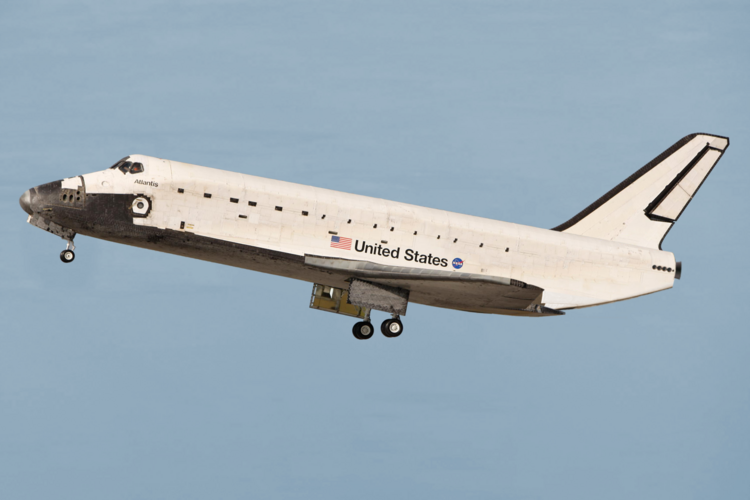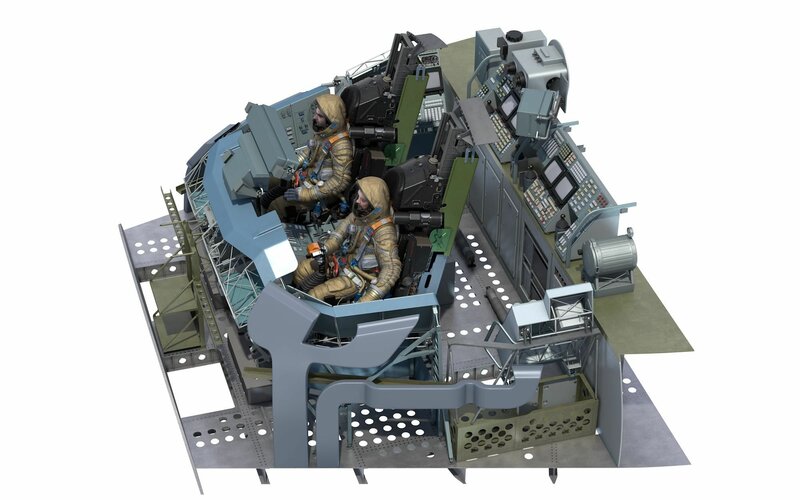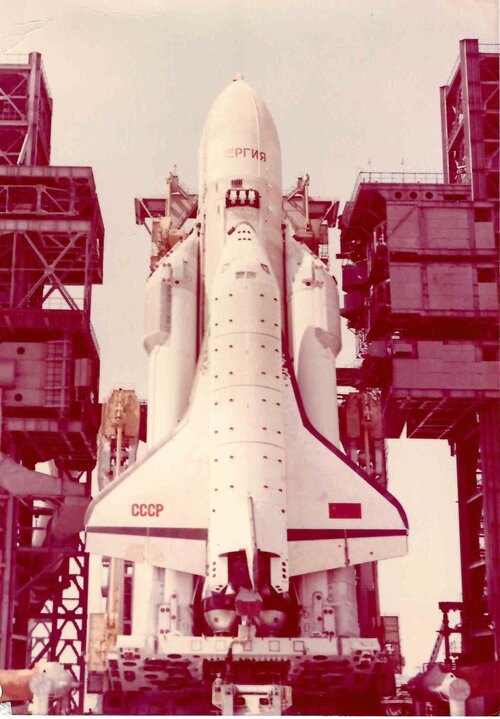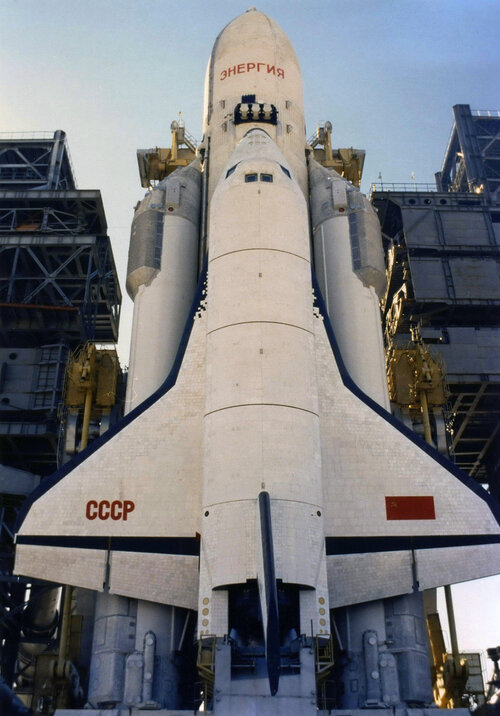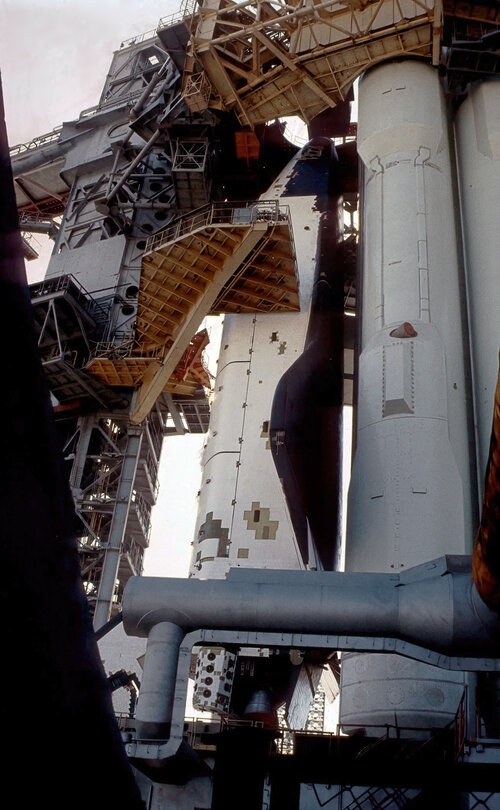Actually, the opposite. Baseline Reference Missions 3A&B flew at 104 degrees inclination which would have not overflown the USSR landmass on the first rev. That is why, the deployment or retrieval of the payload would be done out of sight from the Soviets.7-As it happens, the single-orbit mission trajectory pass very close from Moscow
You are using an out of date browser. It may not display this or other websites correctly.
You should upgrade or use an alternative browser.
You should upgrade or use an alternative browser.
Energia - Buran Space Transportation System
- Thread starter flateric
- Start date
How much of that was political?I can see the point they're making; to my understanding STS was originally meant to effectively replace the US fleet and become a universal launcher, dozens of payloads and missions were devised with the Shuttle in mind, upper stages were developed etc. Meanwhile, Buran was meant to merely complement the existing fleet, and as a result everything that could be launched on R-7 variants stuck with the R-7...
Energiya strap-ons/Zenit could have replaced R-7 and Proton alike.
Such a modular approach would be a true space transportation *system*
galopujacy_jez
Maks
Sure, but then having Buran as a launch vehicle is still inefficient because you can fly stuff on the Zenit.How much of that was political?
Energiya strap-ons/Zenit could have replaced R-7 and Proton alike.
Such a modular approach would be a true space transportation *system*
galopujacy_jez
Maks
And the Zenit was a separate development under Podyom that merged into the RLA as the booster and grew to the new required size.
galopujacy_jez
Maks
820 tonne? That is more than the orbiter weighed.Afaik the nuclear strike report was signed by Keldysh *after* the program was approved, but the fears and potentially the preliminary reults of the study certainly played a big part in the decision. Also important to note the 820 tonne pa return capability planned for Shuttle, which TsNIIMash reported would be consistent with space weapon testbed deployment and return for modifications.
martinbayer
ACCESS: Top Secret
- Joined
- 6 January 2009
- Messages
- 3,343
- Reaction score
- 3,813
I believe the 820 tonne *pa* stands for "per annum".820 tonne? That is more than the orbiter weighed.
MeachamLake
I really should change my personal text
- Joined
- 26 February 2012
- Messages
- 14
- Reaction score
- 38
@galopujacy_jez I've been following your Twitter page for ages, love the content and research you have done. Buran is a fascinating programme!
I’ve long had some questions about Buran/Energia after the programme ended that I’ve never found good answers for…
- Before the roof in the MIK collapsed, there was a lot of surplus hardware stored in there gathering dust (including 1K). Was this basically junk that had no hope of ever flying again, or could it theoretically have been reactivated? I’m guessing not since all of the infrastructure had been abandoned, but I always wondered why they didn’t just scrap everything. It clearly took up plenty of space…we’re the Russians hoping somebody might buy it all at some point?
- On a related note…we’ve all seen the video of 1.02 being hauled into a still functioning, clean and tidy MZK in 1995. What on earth happened to the building in the following years? The entire place looks to have been totally ransacked and vandalised. I’ve never been able to find a clear answer on exactly what occurred here, but it’s clear that by 2005 the place had been completely trashed.
I’ve long had some questions about Buran/Energia after the programme ended that I’ve never found good answers for…
- Before the roof in the MIK collapsed, there was a lot of surplus hardware stored in there gathering dust (including 1K). Was this basically junk that had no hope of ever flying again, or could it theoretically have been reactivated? I’m guessing not since all of the infrastructure had been abandoned, but I always wondered why they didn’t just scrap everything. It clearly took up plenty of space…we’re the Russians hoping somebody might buy it all at some point?
- On a related note…we’ve all seen the video of 1.02 being hauled into a still functioning, clean and tidy MZK in 1995. What on earth happened to the building in the following years? The entire place looks to have been totally ransacked and vandalised. I’ve never been able to find a clear answer on exactly what occurred here, but it’s clear that by 2005 the place had been completely trashed.
Afaik the nuclear strike report was signed by Keldysh *after* the program was approved, but the fears and potentially the preliminary reults of the study certainly played a big part in the decision. Also important to note the 820 tonne per annum return capability planned for Shuttle, which TsNIIMash reported would be consistent with space weapon testbed deployment and return for modifications.
Shuttle could return 15 tons per mission, 820 tons is 55 missions annually. Once again, we are talking about the 1970's blue-sky numbers.
For the record: this was cut to 24 flights annually by 1981, and STS-51L was the result of trying to ramp up 1985's 11 flights into 1986's 16 flights and, ultimately: 1987 24 flights objective.
Post Challenger (and before STS-107) the Shuttle "record" number of flights in a year was 8, in 1996.
galopujacy_jez
Maks
Thanks for the kind words. Vadim (or Incarn) is the expert of course, but I'll try my best.@galopujacy_jez I've been following your Twitter page for ages, love the content and research you have done. Buran is a fascinating programme!
I’ve long had some questions about Buran/Energia after the programme ended that I’ve never found good answers for…
- Before the roof in the MIK collapsed, there was a lot of surplus hardware stored in there gathering dust (including 1K). Was this basically junk that had no hope of ever flying again, or could it theoretically have been reactivated? I’m guessing not since all of the infrastructure had been abandoned, but I always wondered why they didn’t just scrap everything. It clearly took up plenty of space…we’re the Russians hoping somebody might buy it all at some point?
- On a related note…we’ve all seen the video of 1.02 being hauled into a still functioning, clean and tidy MZK in 1995. What on earth happened to the building in the following years? The entire place looks to have been totally ransacked and vandalised. I’ve never been able to find a clear answer on exactly what occurred here, but it’s clear that by 2005 the place had been completely trashed.
The weird thing is that the program was never officially cancelled. Funding was cut and work was suspended, but there was never a decree ending the program. As a result, no funding was appropriated for dealing with the leftover hardware. This is why NPO Energia (RKK Energiya) was stuck with the OK-KS electrical test article taking up valuable space in the assembly shop for 20 years after work stopped.
(It was different with orbiters which were never delivered to NPO Energia; their builder NPO Molniya dealt with the hardware by scrapping it or selling it either to the company's managers at symbolic prices or to multiple foreign buyers at the same time - I'm simplifying a bit, buran.ru's news archive has great coverage of this).
In 1990 Aviation Week reported that 1K had been retired from flight status and afaik no further work was performed to refit the orbiter for flight. The attempt at making it not gather dust resulted in stacking it with an Energia test article in bay 4, where it was supposed to be an exhibit.
As I understand it the Energia hardware was mostly just left there in mothball condition. There were some plans to reuse the hardware, the RD-0120 was a candidate for the EELV and RLV programs and some engines were fired in 1995/96 at NIIKhimmash in a joint test with the Marshall Space Flight Center and Aerojet and installed at test stand 4670 at Marshall (currently used by Blue Origin!), but these were probably engines CADB had in Voronezh, not the ones in Baikonur.

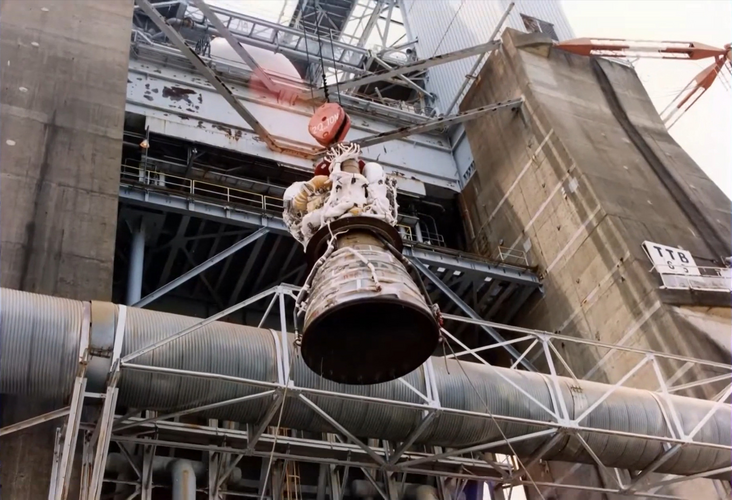
I saw reports that a couple of engines from MIK 112 were sold to China, but I haven't seen that verified anywhere. RD-0120 serial 5351231151, which was in one of the low bays in MIK 112 is now at the Buran cosmodrome museum (see below). In the mid-90s the RD-170s for Energia 3L through 6L were removed from the boosters in MIK 112 for use on Zenit. I doubt they were seriously expecting someone to buy large portions of Energia hardware though, I only know of efforts by Molniya and Energia to sell the technology, e.g. the fuel cells, ejection seats and ceramic tile tech was to be used on Hermes.
As for the MZK, it was transferred to Energia but as you know the orbiters inside are owned by Dauren Musa; the facility itself has not been maintained, its doors are apparently seized shut. That's probably because it wasn't useful for any other program; MIK 254 and MIK 112 are still in use, so they were maintained through the years.
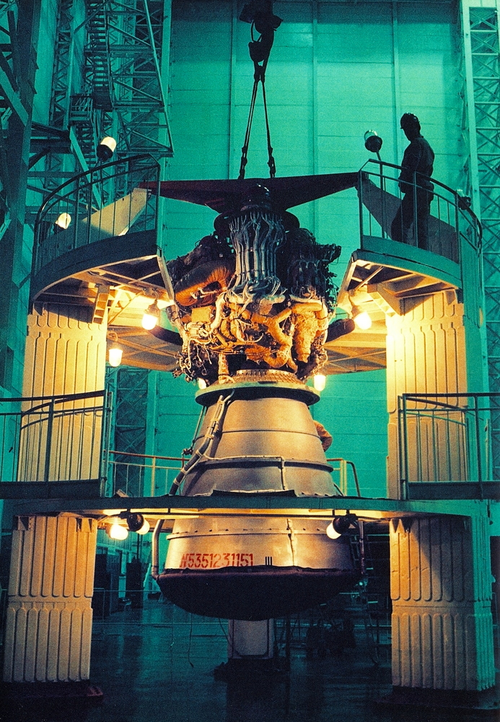
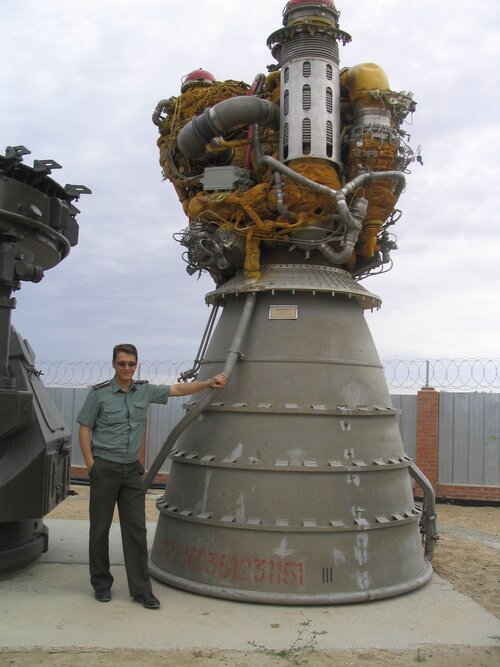
Attachments
Last edited:
Thank you.Thanks for the kind words. Vadim (or Incarn) is the expert of course, but I'll try my best.
Channel wall, correct?As I understand it the Energia hardware was mostly just left there in mothball condition. There were some plans to reuse the hardware, the RD-0120 was a candidate for the EELV and RLV programs and some engines were fired in 1995/96 at NIIKhimmash in a joint test with the Marshall Space Flight Center and Aerojet and installed at test stand 4670 at Marshall (currently used by Blue Origin!), but these were probably engines CADB had in Voronezh, not the ones in Baikonur.
View attachment 749169
galopujacy_jez
Maks
yep! the milled design was even considered by NASA as a potential SSME upgrade in the late 90sThank you.
Channel wall, correct?
Upgrading the Space Shuttle | The National Academies Press
Read online, download a free PDF, or order a copy in print or as an eBook.
doi.org
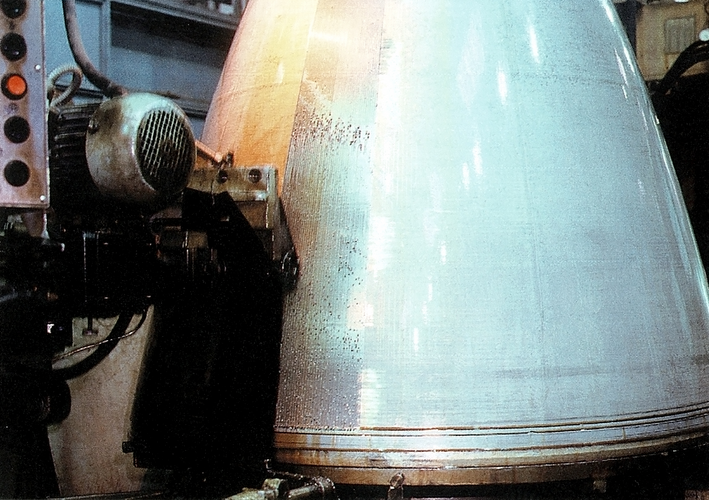
This also talks about orbiter upgrades
--where I read this:
An engineless orbiter developed from a “challenge” by an individual at NASA/MSFC regarding the ability of the orbiter to evolve into an unpowered vehicle, something like the Russian Buran. This worked out very nicely, as seen in Fig. 21, by adding a payload bay segment at the aft end of the bay (as noted above for the stretched orbiter) and moving as much equipment into anew faired aft body as possible to compensate for the removal of the engines and thrust structure. The subsonic L/D increased to an estimated 6.02 as a result.
A drawing shows the concept (from Boeing)---anyone have more information on this?
Wayne Ordway called for something similar--see Figure 4:
--where I read this:
An engineless orbiter developed from a “challenge” by an individual at NASA/MSFC regarding the ability of the orbiter to evolve into an unpowered vehicle, something like the Russian Buran. This worked out very nicely, as seen in Fig. 21, by adding a payload bay segment at the aft end of the bay (as noted above for the stretched orbiter) and moving as much equipment into anew faired aft body as possible to compensate for the removal of the engines and thrust structure. The subsonic L/D increased to an estimated 6.02 as a result.
A drawing shows the concept (from Boeing)---anyone have more information on this?
Wayne Ordway called for something similar--see Figure 4:
galopujacy_jez
Maks
Here's a YT video I just stumbled across concerning the Buran:
Upon the development of the American Space Shuttle program, The Soviet Union also embarked on their own version. This little known space program, which cost billion of dollars, was known as Buran and much like their American counterparts, their shuttle design was strikingly similar. But unlike the NASA shuttle, Buran would only fly a single non-crewed mission to space and ultimately fall into obscurity. Decades later however, remnants of the program still exist, some sitting completely abandoned. Join me today to find out why!
Willythekid
I really should change my personal text
- Joined
- 13 July 2018
- Messages
- 194
- Reaction score
- 1,063
Willythekid
I really should change my personal text
- Joined
- 13 July 2018
- Messages
- 194
- Reaction score
- 1,063
MeachamLake
I really should change my personal text
- Joined
- 26 February 2012
- Messages
- 14
- Reaction score
- 38
Something new to me, at least - this is apparently an ex-Soviet Space Programme test facility in Nevich, Uzbekistan. Built in the early 80s.
Is it just me, or does it look like a cousin of the MZK in Baikonur? Were they constructed by the same organisation(s)? Was anything related to Buran ever intended to be tested here?



Is it just me, or does it look like a cousin of the MZK in Baikonur? Were they constructed by the same organisation(s)? Was anything related to Buran ever intended to be tested here?
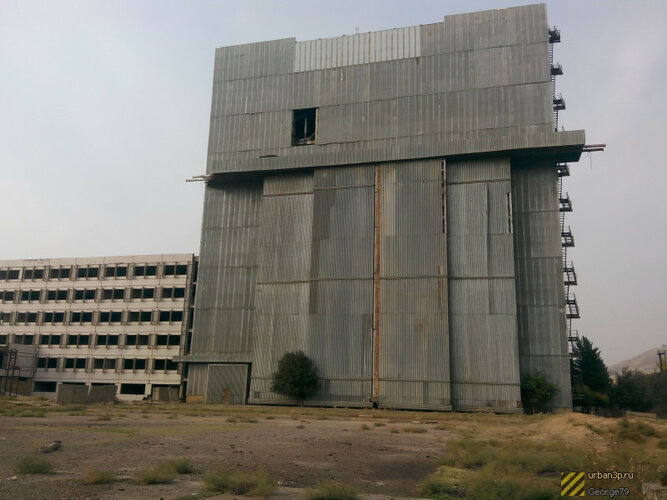

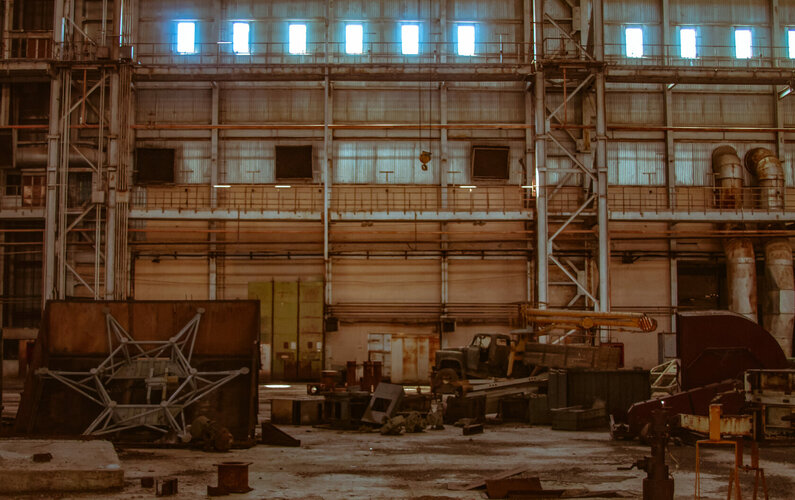
Last edited:
- Joined
- 6 September 2006
- Messages
- 4,829
- Reaction score
- 9,424
It was the TashKBM (Tashkent Machine Building Design Bureau) site, the large hangar was built for the assembly of the RadioAstron Spektr-R orbiting radio telescope.Is it just me, or does it look like a cousin of the MZK in Baikonur? Were they constructed by the same organisation(s)? Was anything related to Buran ever intended to be tested here?
galopujacy_jez
Maks
The Baikonur facilities were built (or designed) by Ipromashprom, who don't mention the Nevich site on their website. Could it have been built by the Barmin Design Bureau together with TashKBM?Is it just me, or does it look like a cousin of the MZK in Baikonur? Were they constructed by the same organisation(s)? Was anything related to Buran ever intended to be tested here?
Last edited:
Willythekid
I really should change my personal text
- Joined
- 13 July 2018
- Messages
- 194
- Reaction score
- 1,063
A little more info here:

Paint.Net Autolevel does a fine job:not a profi in color correction...
Attachments
Willythekid
I really should change my personal text
- Joined
- 13 July 2018
- Messages
- 194
- Reaction score
- 1,063
I don't understand what you want to say with this emoticon.
I was wondering about that.
Willythekid
I really should change my personal text
- Joined
- 13 July 2018
- Messages
- 194
- Reaction score
- 1,063
Yes, they are different pictures! I thought it was the same photo. My mistake.It's clearly seen that these are different photos or I don't understand what you want to say with this emoticon.
buran.energia
ACCESS: Restricted
- Joined
- 28 August 2024
- Messages
- 6
- Reaction score
- 20
I found it in one of the UMMC Museum chats in Pyshma. It seems to have arrived together with the 3K, but I'm not sure how to identify it properly. It could be one of the remnants of the 4K/5K or a part of 005/015, or even part of 35Cт-7/9. At least, the red line does not appear in any photos I've seen before.Very intrigued as to what this is. Is this at Tushino? Remnants of scrapped incomplete airframes (4K or 5K)? Or test crew cabins for trainers?

Last edited:
buran.energia
ACCESS: Restricted
- Joined
- 28 August 2024
- Messages
- 6
- Reaction score
- 20
@Incarn Vadim, Could these be the frames for 0.15 and 0.16?

In the end, 005 and 0.15 look almost identical, and the descriptions match: "11Ф35-005 фрагменты ОК для тепло-вибро-акустичесхих испытаний в камере РК-1500 (ЦАГИ); 11Ф35-0.15 для тепло-вибро-акустических испытаний в обеспечение изделий дополнительного заказа (ЦАГИ)."

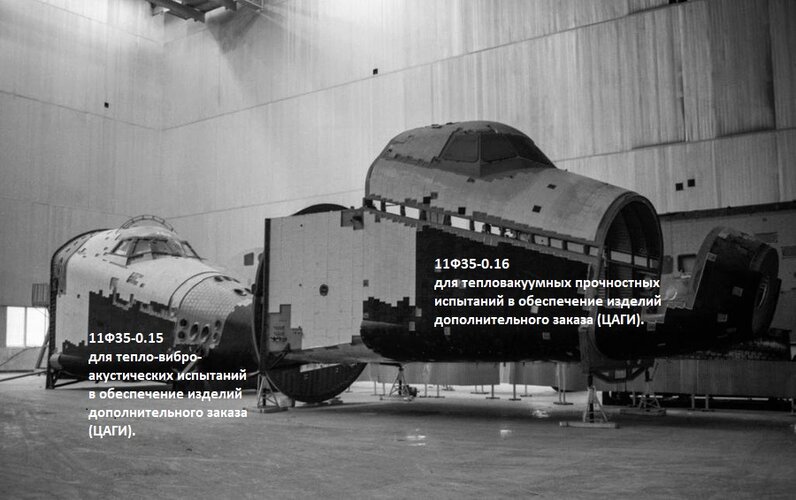
In the end, 005 and 0.15 look almost identical, and the descriptions match: "11Ф35-005 фрагменты ОК для тепло-вибро-акустичесхих испытаний в камере РК-1500 (ЦАГИ); 11Ф35-0.15 для тепло-вибро-акустических испытаний в обеспечение изделий дополнительного заказа (ЦАГИ)."
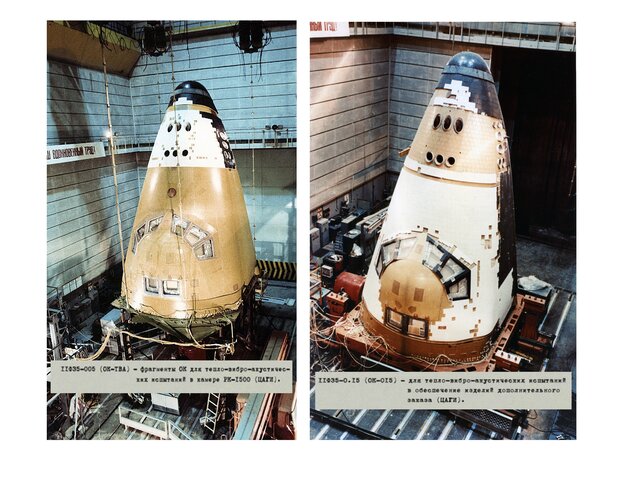
galopujacy_jez
Maks
I'm still a tiny bit skeptical about 0.15 because the "distribution of ships" document only appropriates the *aft fuselage* of 0.15 to Molniya and doesn't mention the forward fuselage, although that might just mean that the forward fuselage was at Molniya already.In the end, 005 and 0.15 look almost identical, and the descriptions match: "11Ф35-005 фрагменты ОК для тепло-вибро-акустичесхих испытаний в камере РК-1500 (ЦАГИ); 11Ф35-0.15 для тепло-вибро-акустических испытаний в обеспечение изделий дополнительного заказа (ЦАГИ)."

On the other hand, as we discussed earlier it does look like it was used for the same suite of testing as 0.05.

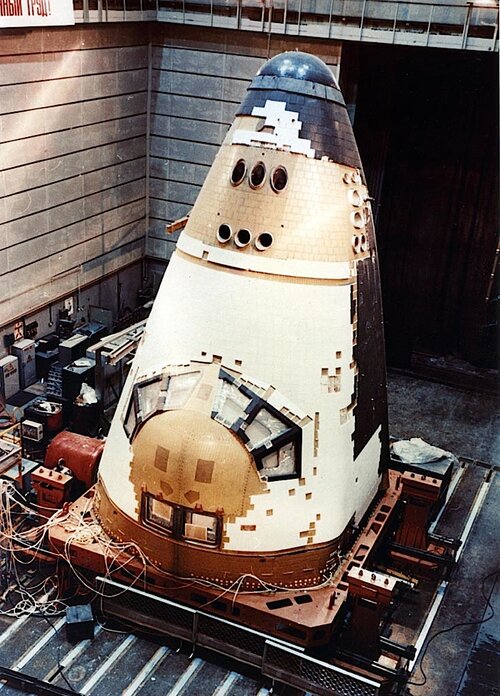
Last edited:
buran.energia
ACCESS: Restricted
- Joined
- 28 August 2024
- Messages
- 6
- Reaction score
- 20
galopujacy_jez
Maks
Most books on the program seem to include one. And every such list is slightly different from the otherIs there an inventory of the (seemingly many) Buran mockups ? complete and partial ones ?
But the most useful/accurate ones imho are:
1. a 1987 Ministry of Aviation Industry list of all airframes and test stands, probably the most comprehensive overall but the descriptions are rather laconic and other sources mention a couple more articles/classify them slightly differently (message above this one) - this list only mentiones *airframes*, while others tend to assign one cabin module an airframe designator
2. a 1992 "distribution of ships" document, which appropriates orbiters or their parts between NPO Energia and NPO Molniya. It only mentions some of the orbiters (presumably ones that were already delivered by Molniya someplace else), but mentions specific segments of test articles, which is very useful
3. mid-fuselage assembly drawings (from buran.ru) and the MAP list are the only ones that mention an extra airframe (0.16)
4. and Lozino-Lozinskiy's "Aviatsionno Kosmicheskie Sistemy" offers a partial list of test articles, but with a great breakdown on what testing was done on each segment of the articles that stayed at Molniya
5. Aviatsionno-Kosmicheskie Sistemy and Semyonov's "Mnogorazovyi Orbitalnyi Korabl 'Buran'" also have pretty good lists of cabin modules/pressure vessels
Vadim Lukashevich's 2018 NK article is also a great summary of what happened to the airframes after work on the program stopped
Last edited:
galopujacy_jez
Maks
Willythekid
I really should change my personal text
- Joined
- 13 July 2018
- Messages
- 194
- Reaction score
- 1,063
galopujacy_jez
Maks
Jaap Terweij, 1991Source: ?
galopujacy_jez
Maks
and pleeeease add even a tiny watermark when you AI upscaleJaap Terweij, 1991
Willythekid
I really should change my personal text
- Joined
- 13 July 2018
- Messages
- 194
- Reaction score
- 1,063
Similar threads
-
-
-
A
-
Russia continues the Buran program in the 1990s and halts production of the Proton rocket
- Started by Vahe Demirjian
- Replies: 13
-
Pre-Buran, OK-92 (Orbitalny Korabl', Orbital Craft)
- Started by flateric
- Replies: 30






